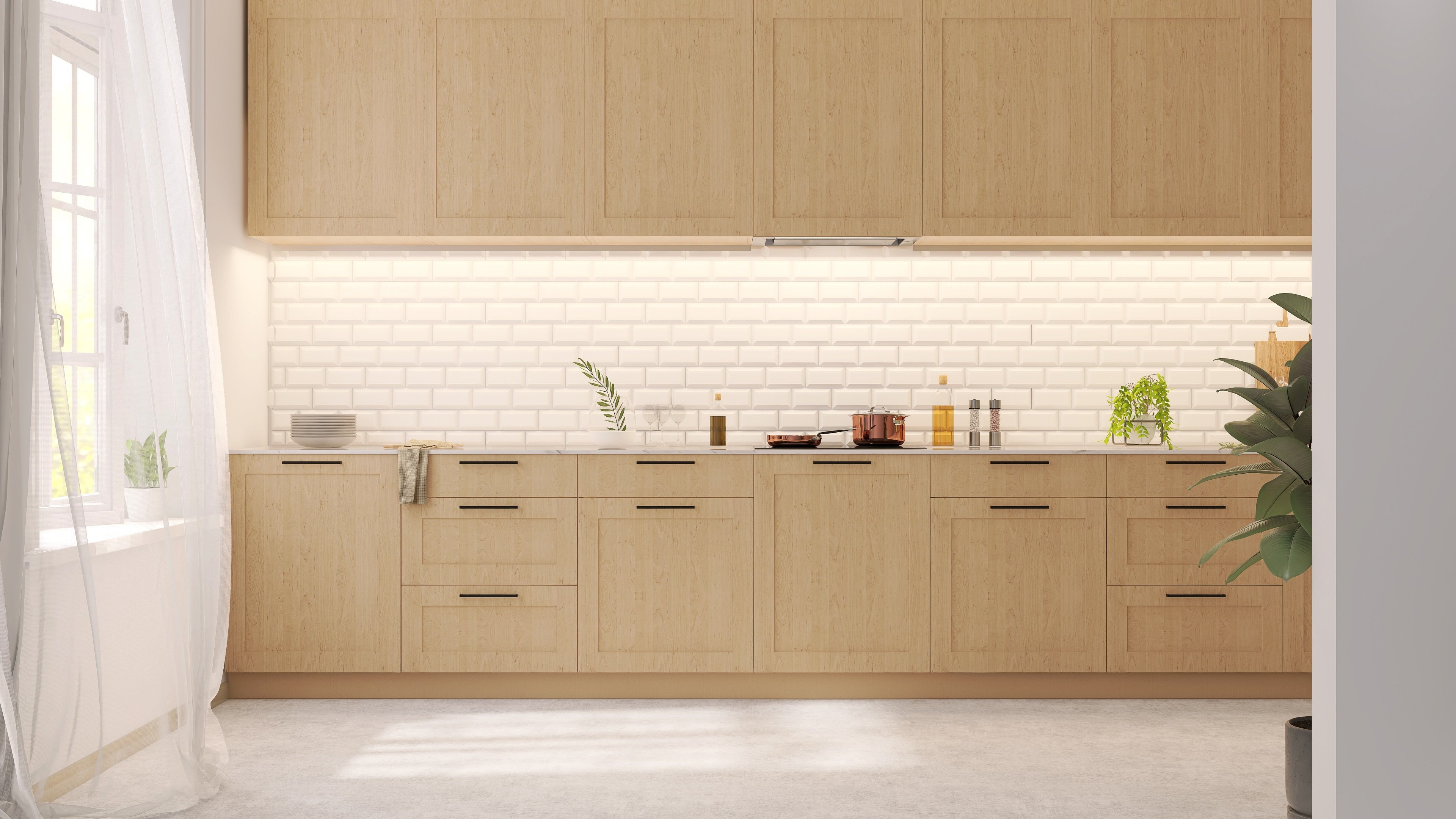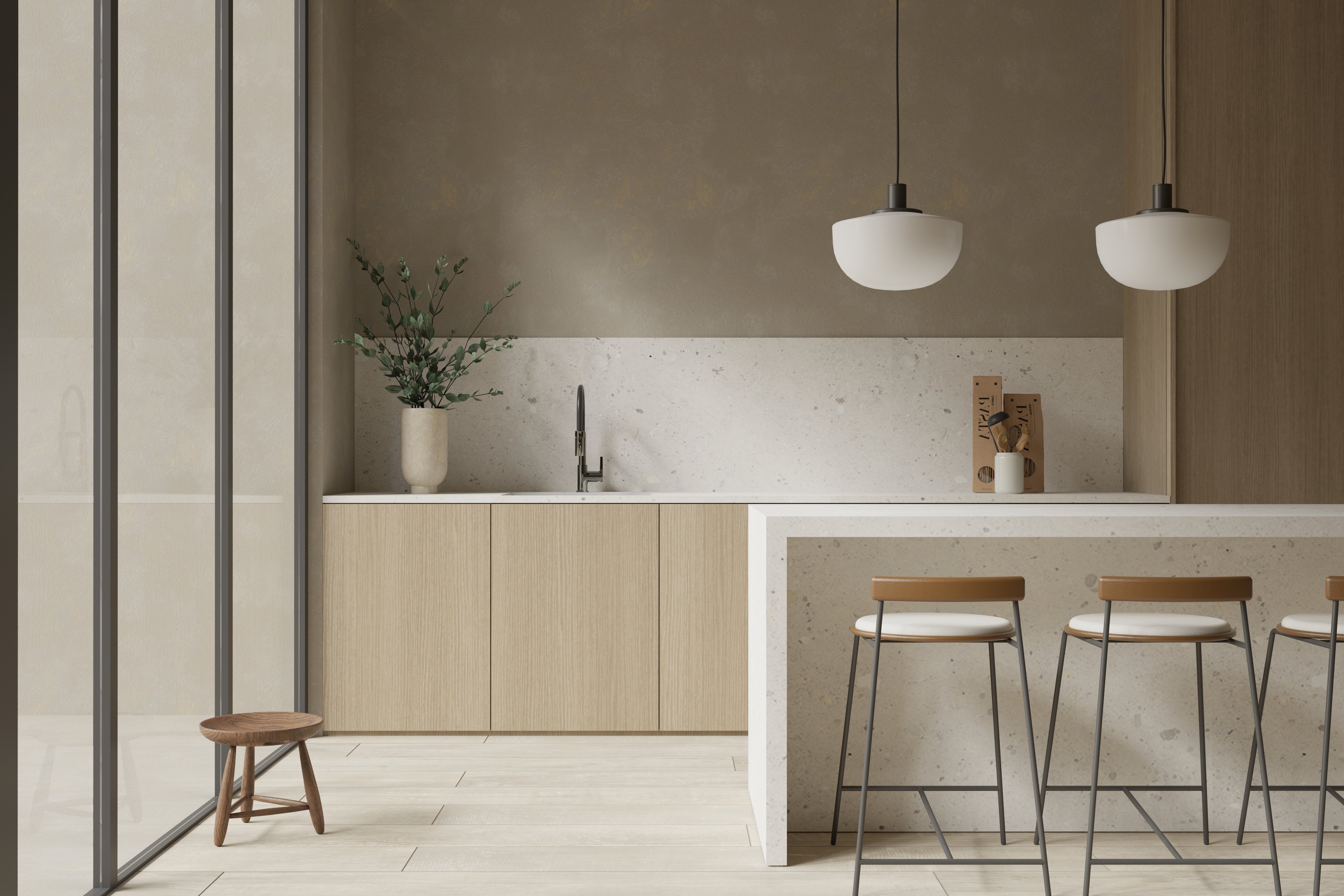Perfect kitchen Accessories and decoration tips to build up your Japandi kitchen
Introduction
Japandi is a fusion of Japanese and Scandinavian interior styles emphasizing simplicity, natural materials, and a neutral color palette. Its elegant style provides a calm, welcoming atmosphere. In our earlier article we have shown that the kitchen, as the heart of one's home, can provide the perfect Japandi space. You can enhance your Japandi kitchen by paying attention to detail and carefully selecting accessories that adhere to the principles of Japandi design.
This time, we'll explore the best Japandi kitchen accessories and offer tips on how to seamlessly integrate them to create a tranquil setting.
How to choose accessories for your Japandi kitchen?
1. Dishware

In a Japandi kitchen, dishware plays a crucial role in maintaining the simplicity and natural charm. Opt for ceramic dishes and stoneware with soft colors such as white, beige, and grey, or earthy tones to complement the neutral color palette.
Avoid overly decorative designs and instead seek simple clean lines. This works not only for visual appeal but also makes it easy to store dishware and helps provide an organized workspace. If there is a pattern, choose understated ones.
Dishware is often displayed on open shelves, adding visual interest to the space. So choose carefully so as to express your own sense of selection without interrupting the overall Japandi vibe.
Modern Japanese tableware embodies simplicity and sleekness, giving a warm feel specially crafted from raw natural materials. Look for handcrafted pieces to add a personal touch to your kitchen shelf.
2. Cookware

When selecting cookware for your Japandi kitchen, it is wise to invest in high quality pieces that perform well. Choose ones with simple, straight-line designs. Matte finishes and neutral colors complement Japandi aesthetics, while avoiding vivid hues that disrupt the tranquil ambiance. To maintain simplicity and sleekness in the kitchen, choose items that are entirely made of a single material. For instance, if you select stainless steel cookware, pick one with a lid and handle also made of stainless steel. This creates a more unified and stylish look compared to those with black plastic components.
Additionally, remember to select cookware that allows you to appreciate the beauty of the material itself. Traditional clay pots are an excellent example. Instead of pots and pans with chemical coatings, you can opt for stainless steel or glass ones.
3. Kitchen tools

Collect kitchen tools with a simple look that store easily in drawers or on the countertop, keeping the workspace neat and organized.
For serving utensils, wooden or bamboo ones are ideal for adding a natural and rustic charm. Handcrafted wooden cutting boards with unique forms and textures, such as olive wood boards, may also enhance the ambiance of Japandi style.
4. Storage items

Organization is key in a Japandi kitchen, and selecting the right storage solutions is essential to maintaining a clutter-free environment. Find user-friendly storage items but avoid artificial materials like plastic. Opt for natural materials such as glass jars, glazed stoneware, or wooden containers. Baskets made from rattan or seagrass add texture and visual interest, serving as decorative accents. You can display a curated collection of storage items on open shelves, creating a visual focal point within the kitchen.
5. Table mat and textile items

Choose natural fabrics like linen or cotton in muted tones to enhance the style. Subtle textures and Japanese-inspired motifs such as bamboo, waves, or cherry blossoms can infuse the Japandi aesthetic.
6. Window treatment

Maintain an abundance of natural light and an airy feeling with attractive windows curtains, while ensuring privacy. Choose sheer fabrics such as thin white linen or cotton, which allow sunlight to penetrate. If selecting lace curtains, opt for ones with a simple design, without decorative patterns or elaborate embroider or frill.
Alternatively, consider installing simple light wooden-color blinds or muted colored roller shades. This may add a touch of warmth and texture to the space. Make sure that the window treatment does not block all light. In certain environments, omitting the window treatment may be the best approach.
Decorating and selection tips for Japandi kitchen.
1. Embrace minimalism

Prioritize simplicity and clean lines when you select your kitchen accessories; this contributes to the overall harmony of space. Avoid clutter and multicolored surfaces from the top of the shelves and the counters to inside of the drawers. Avoid excess; instead, embrace the beauty of emptiness.
2. Keep consistency in the kitchen

You can keep consistency throughout your kitchen by selecting accessories that share common elements such as color, material, or form. Choose the same material or similar color palette and stick to it, ensuring that each accessory complements the others and creates a sense of unity and harmony within the space. If you can, invest in matching sets of the same models, such as dishware, cookware, or storage jars. This which will help maintain a coherent look.
3. Add accent items

Consider adding an effective contrast or a special point of interest with one or two carefully chosen items. A touch of black may add sophistication and character on the minimalist canvas. But there is no need to exaggerate the dark color items; as with creating any style, balance is the key. If not particular kitchen items, incorporate potted plants or fresh fruits or flowers to add a touch of color and organic texture; this will enhance the overall ambiance and connection to the natural world. Strike a balance between simplicity and character, ensuring that each accent item contributes to the overall harmony of the design.
4. Don't forget about functionality

While aesthetics are important, functionality is vital in a Japandi kitchen. Choose accessories that are not only beautiful but also practical and efficient. Prioritize ergonomic design and ease of maintenance. Find tools that are durable and will be long-time companions for you. Purchase the ones you fall in love with and treat them well. Especially high-quality ones may never need to be replaced.
Conclusion
We hope this article helps you choose the right kitchen accessories for your Japandi kitchen. However, we also need to address a common kitchen problem: accumulating an unnecessary abundance of dishes and tools without realizing the impact on the overall efficiency of the space. Before selecting accessories, consider removing unused items that have lingered for years, disrupting the functionality of the kitchen. This practice does not only align with the minimalist principles of Japandi design but also promotes a sense of mindfulness and comfort.

